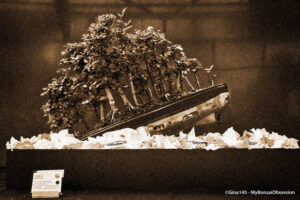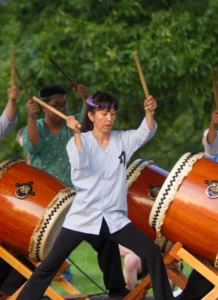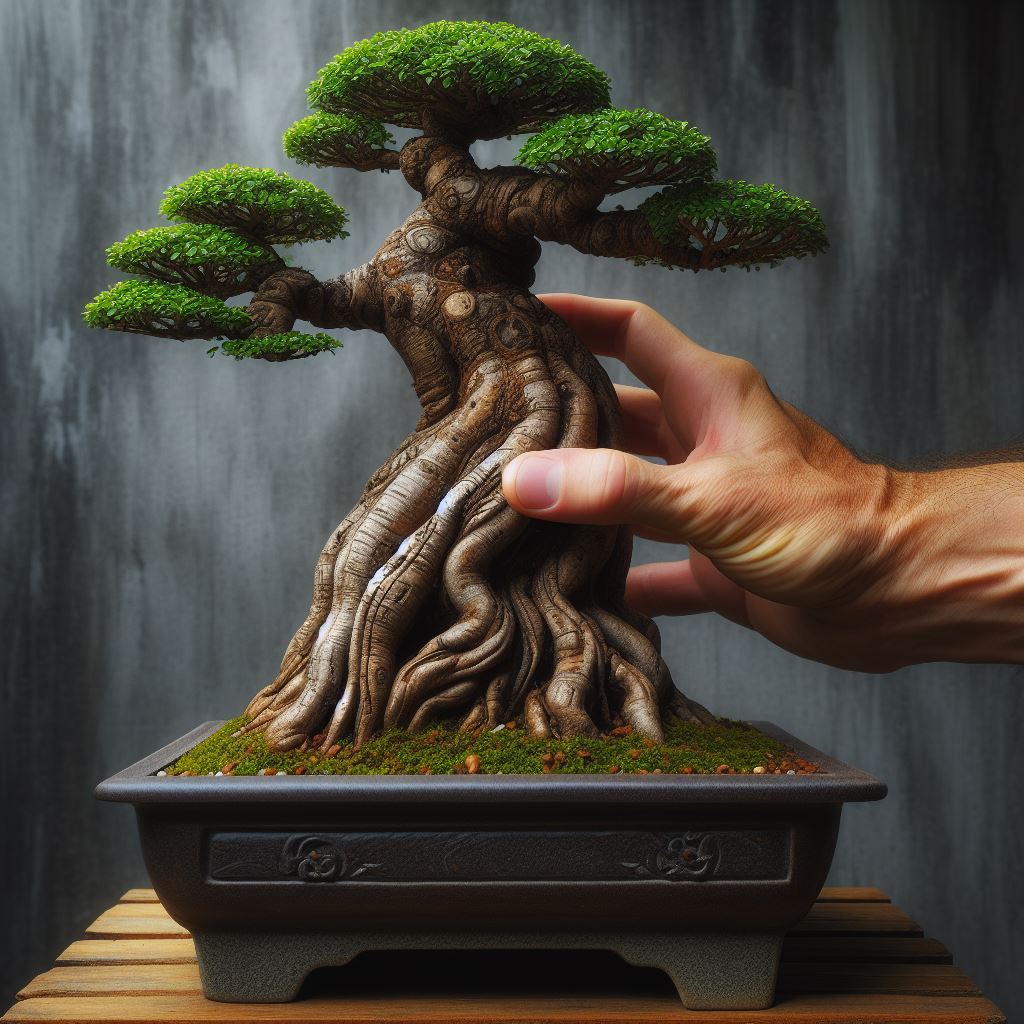
Ground growing options
If you want ABS show quality trees with out spending hundreds or thousand of dollars, growing your own trees may be the way to go. If you are willing to put the time and effort in you can grow a tree with good taper and ramification at home. In this article I will discuss the various options to start growing trees to increase trunk diameter. In future articles we will explore the pruning process to create taper over the years and balance energy distribution in the foliage to manipulate growth to create a high quality bonsai. This process can take five years to decades.
Option 1: Plant tree in a space in your yard and just let it grow.
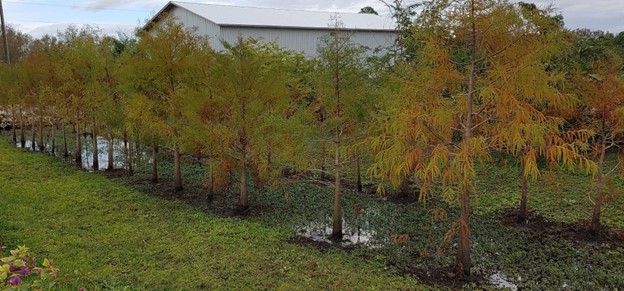
Pros:
This method will allow big roots, big roots allow for rapid trunk and branch growth. This is the fastest growing method. This is also the easiest method as you do not have to be as careful about watering and as long as the tree is grown in the right zone, you can leave it in the ground for winter. Once the tree is established you can plant and forget for a few years. These plants are hard to over water or have root rot as the earth will adjust water levels for you and the ground heat helps with root growth and winterizing.
Cons:
This method can cause several complications like rapid growth of all parts of the tree which is hard to control, wire bite quickly into branches (I have had maples grow into the wire in two weeks), hard to wire on ground (try lying on your side in the yard cutting wire off of a tree and then wiring from the side once, mostly big roots and can take more years to transition to bonsai once you have dug up the material. (Partial solution is to pull from ground every 2 to 3 years, prune roots and replant on a tile then use guide wires. Which is part of a follow up article to this one.) With deciduous material that buds easily, like maples, just work on trunk size and clip branches before they get to thumb size to prevent scaring. Conifer material grows slower so this can work for a few years, but they should be pulled from ground before top branches become too big and shade out lower branches. For both types of trees energy distribution of foliage will be very important. Little trees want to become big trees when they are in the ground and they will try to shoot up. The tops will become tall and thicker than we want if you do not reduce the folliage mass. For anything other than maples and other fast growing deciduous trees, drastic pruning to the top is a must, but let lower branches thicken to about 50% to 75% of what you want as the final branch thickness and then start pruning these as well or pull from the ground and start working on ramification. In Japan, the growers will work trees for the 1st 3 years in a pot were they can establish good root flair, trunk movement and ramification in branches. They will then plant the tree into the ground or colanders and select sacrificial branches to grow out and then prune back on the lower branches. This will help increase foliage production, which will translate into thicker branches and trunks. This method is slower and take a few years longer but will give you better results.
Option 2: Plant tree in a prepared area, plant on top of a tile or a plastic 5 gallon top,and dig up every 2 to 3 years to work on the and the roots every 2 to 3 years.
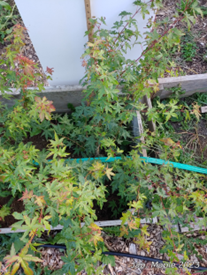
Pros:
With this method, digging the trees will be easier as they will not have time to establish really thick roots like option 1, but you may be surprised how quickly roots grow. The smaller roots near the base will also fuse quicker and start to produce a better nebari. Once you have dug up the tree you can put the tree on a bench that will make pruning of the roots and branches easier. This is also a great time to till in some organics to the soil before replanting. The replanting also allows you to rotate the tree to insure a different side of the tree faces south giving the final tree better balance. Like option 1, this is an easy to care for method, once a plant has been planted and normal extra care has been given for recovery these trees will need less attention than pot plants and can usually survive or period of usual rainfall and only need occasional extra water and fertilizer. These plants are hard to over water or root rot is minimal as the earth will adjust water levels for you and the ground heat helps with root growth and winterizing.
Cons:
This method does require extra work in the spring or fall for replanting. This method is also slower as the tree will take the first year in the ground to reestablish roots and significant trunk and branch work will only be noticed in the 2nd and third year. Like option 1, this method will only work with trees that can grow in your zone.
Option 3: Use a fabric grow bag.
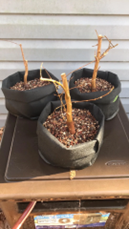
Pros:
This is an improvement on option 2. This method gives you the warmth of the ground for root growth and the ground to help manage water and nutrient balance. The grow bag constricts root growth providing more roots where you will need them later as a bonsai and is easier to pull from the ground for trimming and wiring. The grow bags are also tend to be lighter than option 4, which helps with moving.
Cons:
Fabric bags cost a bit more, and plant roots can grow through bags.
**Special note, I have not used this method yet, but most of the big bonsai nurseries grow trees using this method.
Option 4: Growing trees in large pots or wood box
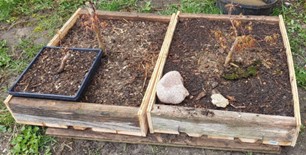
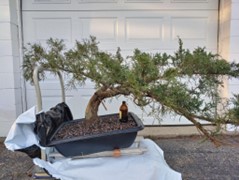
Both images authors collection
Pros:
Plastic: Cheaper, good for basic growing. Black pots can raise temperature of substrate and roots in summer when in direct sunlight. “Grow in plastic pots because they are cheap.” Jonas Dupuich of Bonsai Tonight
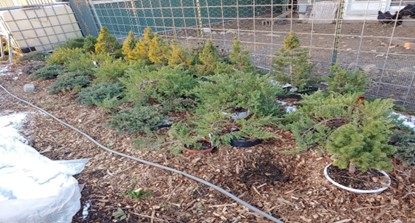
Clay: Provides structure for wiring, pot holds moisture to promote root growth Anderson Flats: Need to be raised to improve draining for good root growth, could be purchased or made like the sample on the right. I personally use these for starting cuttings and growing maples from seeds. If you look at the sample material for the MidCentral Bonsai Show you will see that many of the workshop trees were grown in anderson flats.
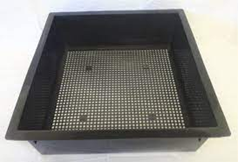
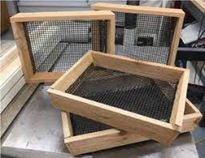
Pond baskets or colanders. Great for pines and conifers, plenty of aeration and when roots grow to the sides they self prune once they hit air and you will not get roots growing in circles like in a round pot.
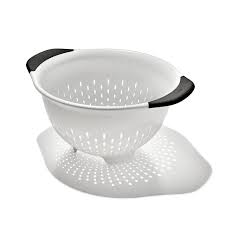
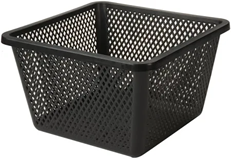
Wood Box: Customizable and breaths, wood helps insulates in winter and will not heat up as much as black plastic. Can also add screws for guide wires.
All three options can also be moved to warm winter storage allowing for the growth of sensitive plants. I use this method exclusively for trident maples and bald cypress in Northern IL zone 4.
Cons:
Plast is harder to control water to air ratio and more likely to have root rot, others cost factor. All will limit growth. (Limited growth can be a benefit later in refinement period).
When planting in a container (options 3 and 4) you can not use regular garden soil as the soil will retain too much moisture and you will not get the required oxygen to moisture ratio to grow good roots. Bonsai soil would work, but can be expensive in the amount needed for large pots. Most nurseries use composted wood or pine bark mulch with additives (potting soil and sand at times). Tolperian Pines used a mix of 40% pine bark, 40% composted manure and 20% pumice or other aggregate. They used grow bags and then fertilized heavily all season long with miracle grow or “what ever we could get.” (Farm to Table Roundtable.)
Conclusion:
There really is no “best” way to grow your starter bonsai and this list is only scratching the surface to the options out there. The best way is to do your own research, talk to some people who have grown bonsai material and figure out what would work best for the conditions you have at home.
by Jasosn Davids
Resources:
Texts
Bonsai Times: Growing Basics: #2, #4, #5, #47 Transplanting: #21, #17, #40, #70, #76
Bonsai with Japanese Maples by Peter Adams (excellent book for maple fans)
Podcasts
https://open.spotify.com/episode/6HbDFsOkEnadlSVGvzmSkR?si=qLiPye8tQGabxF8P3PPNDg
https://open.spotify.com/episode/6eqfPClp7yBSvWrsyyZCTD?si=nDeQArdATJuAFIXHdQrZmw
https://open.spotify.com/episode/1NbV4mUOYXG6WtEFR98ZlC?si=uU_ZJDQkR7az51HYhCrmVw
https://open.spotify.com/episode/6HbDFsOkEnadlSVGvzmSkR?si=0tH9Kw7oTH6IfZcT0nVWCw
YouTube
https://youtu.be/a9ZLWpnw3t0?si=qYQm0gECOuAU_bC3
Peter Chan
Farm to table roundtable BSOP Series
And please remember, the books and magazines are available from our PSBS library on this and many other bonsai topics.


